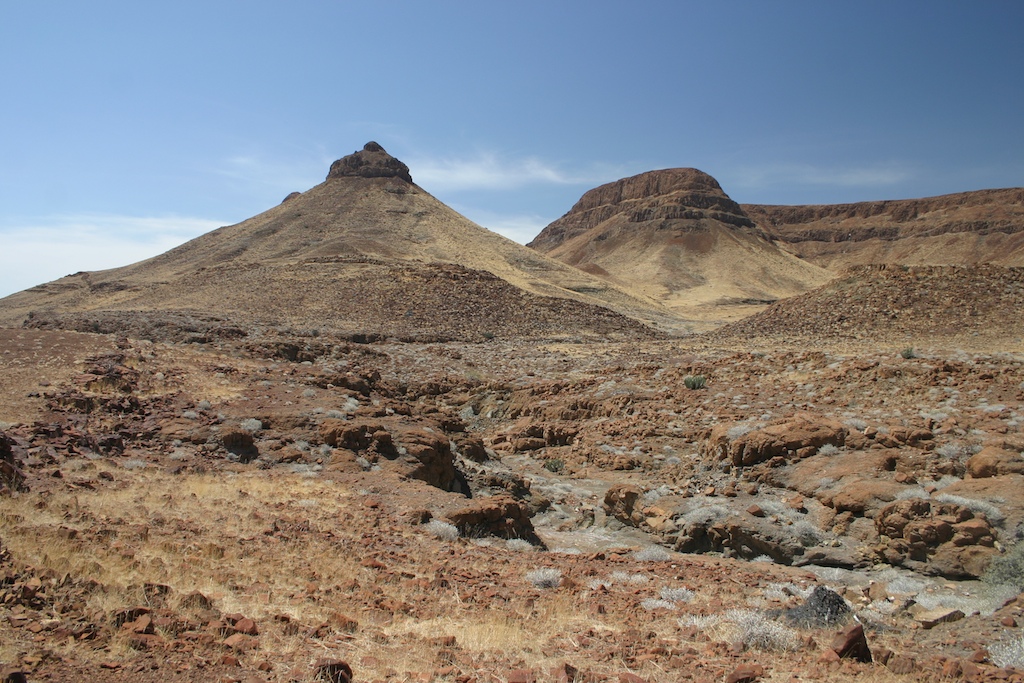Pediplain on:
[Wikipedia]
[Google]
[Amazon]

 In
In

 In
In geology
Geology () is a branch of natural science concerned with Earth and other astronomical objects, the features or rocks of which it is composed, and the processes by which they change over time. Modern geology significantly overlaps all other Ear ...
and geomorphology
Geomorphology (from Ancient Greek: , ', "earth"; , ', "form"; and , ', "study") is the scientific study of the origin and evolution of topographic and bathymetric features created by physical, chemical or biological processes operating at or n ...
a pediplain (from the Latin ''pes'', genitive case ''pedis'', meaning "foot") is an extensive plain formed by the coalescence of pediment
Pediments are gables, usually of a triangular shape.
Pediments are placed above the horizontal structure of the lintel, or entablature, if supported by columns. Pediments can contain an overdoor and are usually topped by hood moulds.
A pedimen ...
s. The processes through which pediplains forms is known as pediplanation. The concepts of pediplain and pediplanation were first developed by geologist Lester Charles King
Lester Charles King (1907–1989) was an English geologist and geomorphologist known for his theories on scarp retreat. He offered a very different view of the origin of continental landscaping than that of William Morris Davis. Studying at univ ...
in his 1942 book ''South African Scenery''. The concept gained notoriety as it was juxtaposed to peneplanation.
The coalesced pediments of the pediplains may form a series of very gentle concave slopes. Pediplains main difference to W. M. Davis’ peneplains is in the history and processes behind, and less so in the final shape. Perhaps the most notable difference in form that may be present is that of residual hills which in Davis’ peneplains are to have gentle slopes while in pediplains they ought to have the same steepness as the slopes in the early stages of erosion leading to pediplanation.
Pediplanation is linked to scarp retreat
Scarp retreat is a geological process through which the location of an escarpment changes over time. Typically the cliff is undermined, rocks fall and form a talus slope, the talus is chemically or mechanically weathered and then removed through ...
in the following way: as scarps retreat over geological time
The geologic time scale, or geological time scale, (GTS) is a representation of time based on the rock record of Earth. It is a system of chronological dating that uses chronostratigraphy (the process of relating strata to time) and geochronol ...
pediments migrate and extend over large areas. The result is that the surface is eroded chiefly backward and that downward erosion is limited. In contrast to common peneplain
390px, Sketch of a hypothetical peneplain formation after an orogeny.
In geomorphology and geology, a peneplain is a low-relief plain formed by protracted erosion. This is the definition in the broadest of terms, albeit with frequency the usage ...
conceptualizations several pediplains might form simultaneously at different altitudes and do not necessarily grade to a base level
In geology and geomorphology a base level is the lower limit for an erosion process. The modern term was introduced by John Wesley Powell in 1875. The term was subsequently appropriated by William Morris Davis who used it in his cycle of erosion ...
. Pediplains are normally formed in areas of arid
A region is arid when it severely lacks available water, to the extent of hindering or preventing the growth and development of plant and animal life. Regions with arid climates tend to lack vegetation and are called xeric or desertic. Most ar ...
and semi-arid
A semi-arid climate, semi-desert climate, or steppe climate is a dry climate sub-type. It is located on regions that receive precipitation below potential evapotranspiration, but not as low as a desert climate. There are different kinds of semi-ar ...
climate. As climate changes arid and semi-arid periods of pediplanation may alternate with more humid periods of etchplanation resulting in the formation of flattish surfaces (peneplains) of mixed origin (polygenetic).
Cryoplanation
In geomorphology, cryoplanation or is a term used to both describe and explain the formation of plains, terraces and pediments in periglacial environments. Uncertainty surrounds the term, and the effectiveness of the cryoplanation process is hel ...
is a variant of pediplanation that is restricted to cold climates.
Examples
*South Sudan
South Sudan (; din, Paguot Thudän), officially the Republic of South Sudan ( din, Paankɔc Cuëny Thudän), is a landlocked country in East Africa. It is bordered by Ethiopia, Sudan, Central African Republic, Democratic Republic of the C ...
See also
* * * *Notes
References
Planation surfaces Erosion landforms {{Geo-term-stub